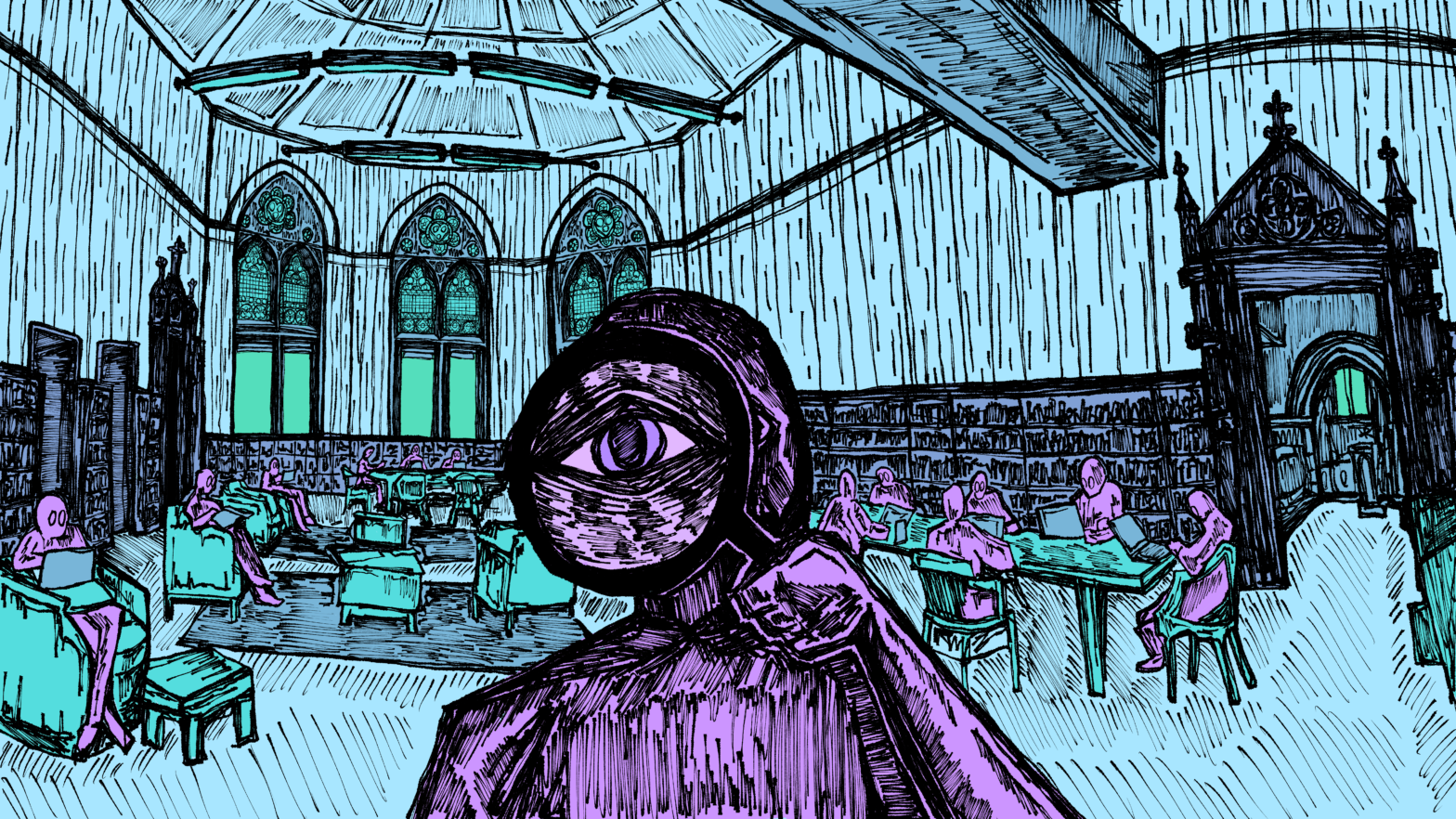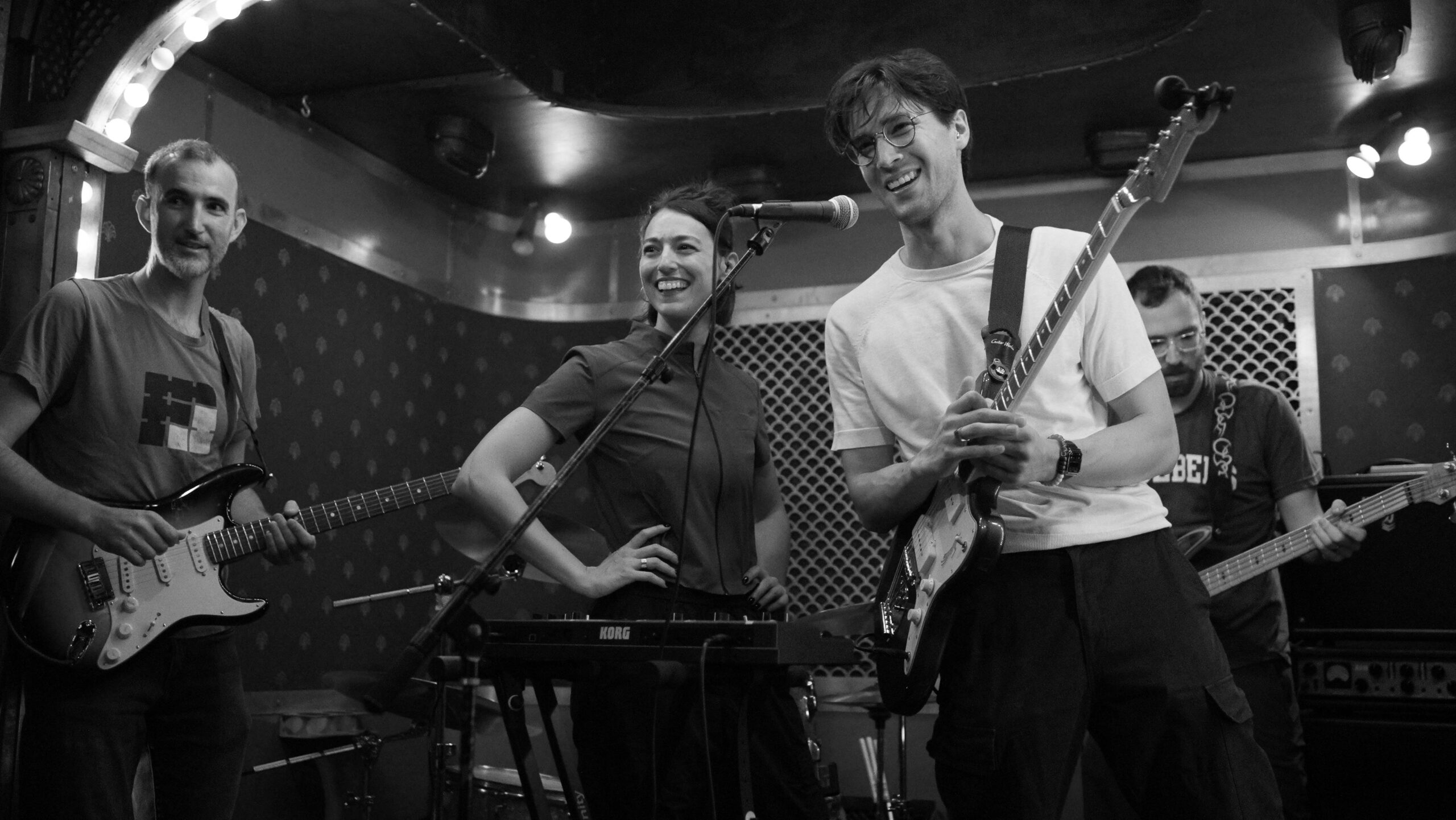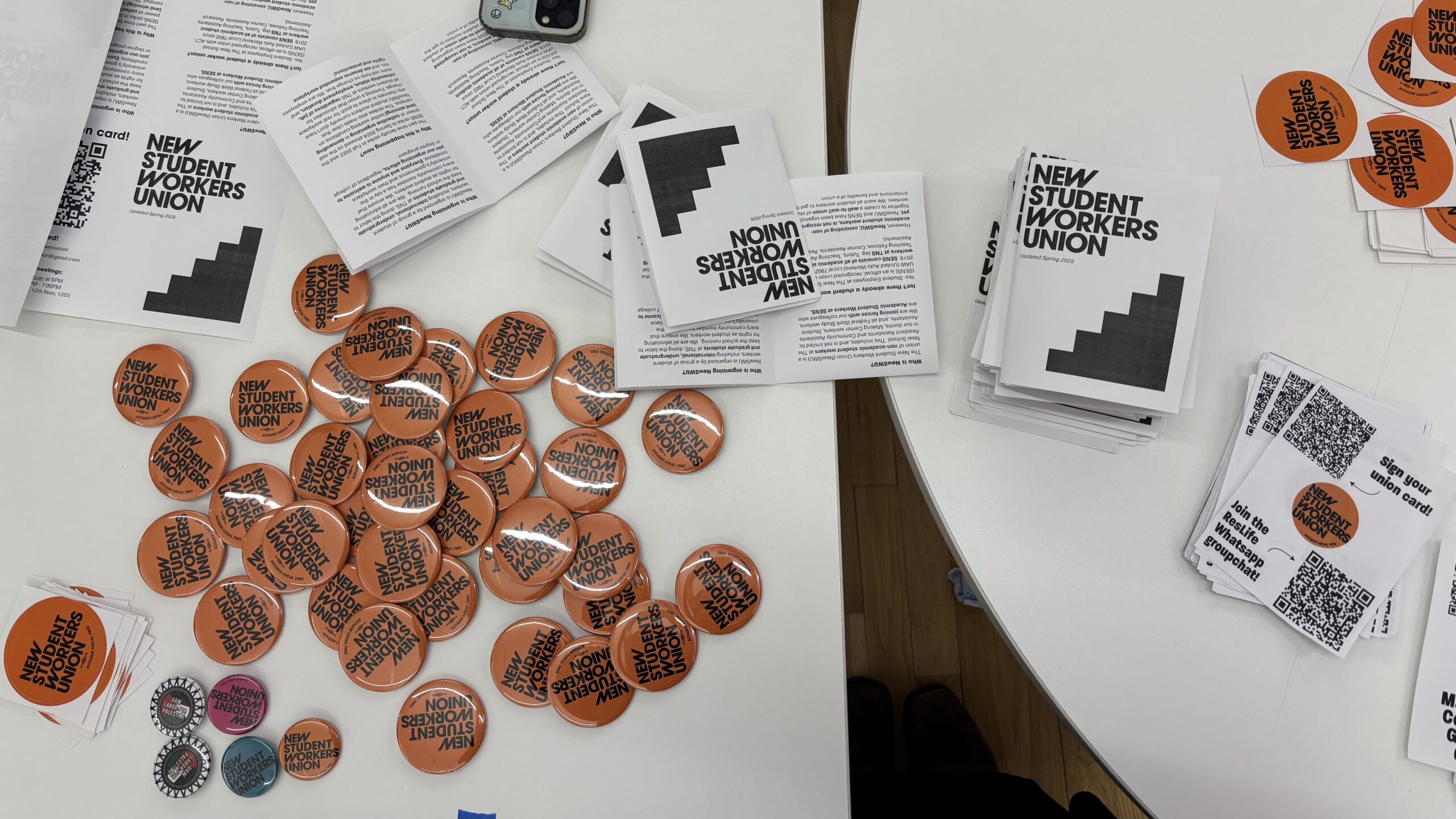Welcome to Writes & Bites — a series where Creative Writing MFA student Arianna Gundlach will periodically review a place in New York City you could write at and tackle a writing topic that has been weighing on your mind. This week we look at Jefferson Market Library located at 425 Sixth Ave.
Hello, exquisite readers and writers. I’ve been expecting you.
Winter weather is settling in with chilly temperatures and whipping winds, and I suspect we’ll still have more weekends of dismal rain in the city. But I know a place that will keep you and your writing warm and dry, while also providing a front row seat to the changing seasons outside.
Take an eight-minute walk from the University Center to catch a glimpse of the red-brick, looming clock tower of Jefferson Market Library. This memorable branch of The New York Public Library was designed “in a Victorian Gothic style” and has previously served as a courthouse and a “holding area for prisoners on their way to jail or trial,” according to their website. The library is still just as interesting on the inside as it is from the outside.
Upon entering the library there is a security guard, but unlike at the main NYPL Schwarzman branch — you’re not waiting in a queue, and no one is checking your bag. You don’t need a NYPL library card to access the building or any of the reading rooms. Though if you still don’t have one, the librarians are happy to assist you. They don’t permit large bags, but you can get in with a typical purse, backpack, or shoulder bag. There is cell phone service and public Wi-Fi available. And for accessibility purposes, there are elevators that serve all floors of the library.
The first floor is home to the Children’s Room, if you want to indulge your inner child by picking up a copy of “If You Give a Mouse a Cookie” and sitting among the little chairs and tables. But I suspect you’ll be more interested in the second floor, so let’s go on up.
Ascend the spiral staircase with stained glass windows to access the Adult Reading Room. Going up the stairs has a church-meets-castle-vibe that will fulfill your Harry Potter dreams without traveling to the UK. And if you’re writing the next great Gothic novel, or you’re a fan of works like Mary Shelley’s “Frankenstein,” prepare to be thrilled.
The walls of the Adult Reading Room are artistically covered in grayscale scribblings and old-timey library check-out cards. Books and movies on dark chestnut brown shelves surround you on all sides. On the left are three large sections of stained glass inset among worn wood and on the far-right are three large windows overlooking the Jefferson Market Garden. Sitting near the windows is a great place to hole up on a rainy day and watch a storm.
For seating, there’s blue cushiony chairs with adjustable desk attachments for your laptop and two long light-wood tables with outlet bars for easy charging.
The atmosphere is quiet. But not the intimidating, all-consuming quiet of the NYPL main branch, where if you drop something or move your chair a little too hard, everyone shoots you a death glare. You can still hear the reshelving of books, the scrape of a pencil against paper, furious typing, and the librarians’ book scanners. The temperature is comfortable — not too stuffy or warm, which can be a common problem in libraries.
If you’re already intrigued, don’t get too comfortable, there’s still another level to explore. Descend the stairs to the basement, if you dare. Past the low red-brick archways, golden frames, and ancient trunks, you’ll find the Reference Room. This section houses physical newspapers, reference books, and old-fashioned prints — I suspect you writers who still prefer pen and paper (don’t fret, I’m one of you) will be particularly jazzed about this.
There are four long wooden tables, one with public computers. Easy charging is still available with outlets against the wall and charging bars on some of the tables. There’s also a few maroon cushiony chairs, if you want to be a cozy loner, like me. This is also where you’ll find the only restroom in the library.
Looking around, you’ll notice it’s the little details of Jefferson Market that make it worthwhile: the spiral staircase, the stained-glass, the large windows overlooking the garden, the outlet bars, the Gothic pedestals holding book displays. And as writers, we must also pay attention to the little details to keep our readers invested and interested.
Tense and point of view (POV) are little details that seem instinctual and easy when reading a book, but actually can bring writers a lot of trouble. I’m here to remind you that you’re in control of these choices.
With tense, you typically have three options: present (writes), past (wrote), and future (will write). Past tense is the most invisible to the reader’s eye. Don’t believe me? Read this: “It was a dark and stormy night.” Now, read this: “It is a dark and stormy night.” I bet the first one read naturally and the second stuck out a little more. The reader’s eye does the same thing with the word “said” as a dialogue tag, rather than tags like “replied,” “inquired,” “growled,” or “bellowed.”
However, I’m not saying you can’t, or you shouldn’t use a different tense. Present tense is known to give a more immediate and action-oriented feel. Honestly, I haven’t read much in future tense except for portions of some picture books, but I think it could be interesting in small doses. I recommend seeing what your work-in-progress wants to be. When you just start writing (without thinking) does it come out in present? Does it come out in past? Which sounds better to you aloud? Just run with it and see what happens.
With point of view, you typically have four options: first person (I), second person (you), third-person limited (he/she/they), and third-person omniscient. Third-person limited follows a protagonist closely, while third-person omniscient can jump between “character heads.” POV lets us know whose story it is, who we should be invested in, and who we should care about. So first decide who your protagonist is or if you have an ensemble cast, consider third-person omniscient or switching POVs between chapters — just make sure this is absolutely clear to the reader.
First person puts you immediately into a character’s headspace and has a similar kind of immediacy as present tense. Third person, which is a very popular choice, gives you more room to describe and allude outside of your protagonist. Second person may seem odd, like using future tense, but I recently read a piece that was just as immersive using this POV. Using “you” allows you to direct the reader as you see fit and place them in your protagonist’s shoes without doing much. Whatever POV you decide to use, remember to keep in mind your characters’ interiority and physicality.
While the Jefferson Market Library doesn’t permit or provide any food, there are some nearby options for you to enjoy. Wrangle a seat at the Bagel Pub across the street. I haven’t been able to yet, but their name and impressive selection of bagels and schmears are attention grabbing for sure. Double check their unorthodox hours and stop by early in the day.
Try the salted maple latte at Stumptown Coffee Roasters. Tell me all about it — I’ve been dying for a taste. People watch at Hungry Ghost Coffee and get a hot chai — certified as excellent by my MFA partner in crime and chai connoisseur Sally Deen. If you need a pick-me-up, visit Hawa Smoothies and Bubble Tea for a Peanut Butter Punch.
Not feeling inspired by your current writing implements? Drop by Goods for the Study stationery store. They have an entire wall just dedicated to pens, which I promise you is nothing less than magical.
So when you find yourself at the Jefferson Market Library, nail down some of those little details, and then treat yourself to something at one of these nearby spots. Make the choice that feels right to you and remember, at the end of the day it’s your story. You have all the power to make it great.
Jefferson Market Library
425 Sixth Ave.
(212) 243-4334
https://www.nypl.org/locations/jefferson-market
| Commute 8-minute walk from the UC and 2-minute walk from the Lang building. | Hours Mon-Thurs: 10 a.m.-8 p.m. Fri-Sat: 10 a.m-5 p.m. Sun: 1-5 p.m. |
| Tech Laptop-friendly. Outlets and charging bars available. Public Wi-Fi available. | Layout Children’s Room on the first floor. Adult Reading Room on the second floor. Reference Room in the basement. |
| Gems Gothic architecture; historical landmark; Hogwarts-esque interior; spiral staircase and stained-glass windows. | Noise Level Relatively quiet. |
| Atmosphere Decent amount of seating. Even at peak hours there’s still a seat or two open. A place for writers, students, academics, and booklovers alike. | Rating 3/4 Stars – based on The New York Times star system: “ratings range from zero to four stars. Zero is poor, fair or satisfactory. One star, good. Two stars, very good. Three stars, excellent. Four stars, extraordinary.” |
| Be Aware Only drinks with lids are allowed. No food permitted. No large bags. Only one restroom in the basement. |








Leave a Reply